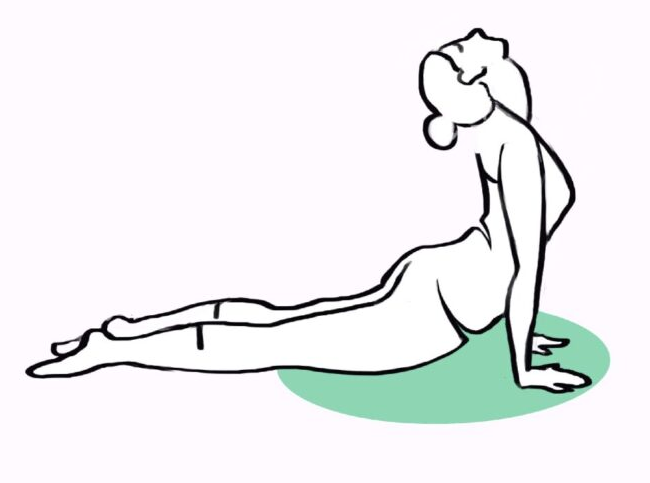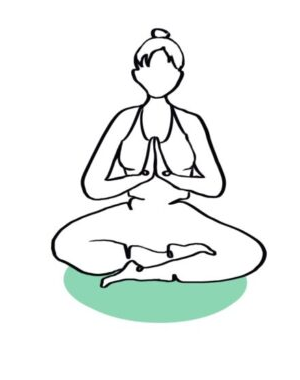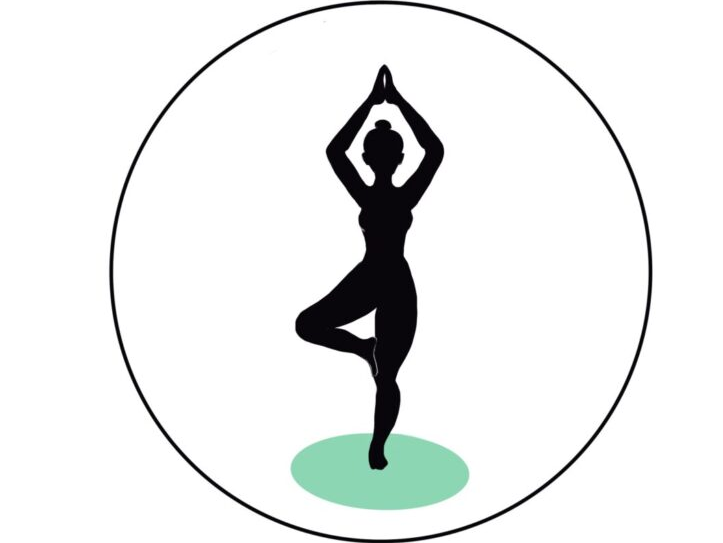
Hormone yoga helps to bring physical imbalances back into balance. But how does it work? We explain how our body works and what causes physical imbalances. In this article you will find information about the guiding principle of hormone yoga and what successes a natural hormone therapy brings. Finally, we explain the most important elements of a hormone yoga class and which breathing techniques are used to stimulate the hormone glands.
All of us who practice yoga regularly feel every little change in and on our bodies and know that the millennia-old Indian way of yoga has a comprehensive and profound effect on our mental and physical well-being. The multifaceted effects of this yoga practice can prevent, alleviate or even cure some physical and mental ailments.
How does our body work?[1]
Certain cellular processes coordinate and control our body to function. The hormone system is responsible for this. It passes on messenger substances (hormones) as the body’s own “instructions”. Hormones are produced in glands, distributed in the blood and control vital functions such as circulation, breathing and metabolism. Hormones are also responsible for how we feel. The best-known hormones include the thyroid hormone thyroxine (TSH), estrogens, insulin and cortisone. Substances are continuously built up or broken down in the body. Meanwhile, metabolic disorders can be quickly detected in the blood. As soon as certain blood and hormone values in the body are below or above the normal limit, the production of hormones is initiated or even stopped. When hormonal fluctuations occur, the internal balance of the body is out of balance and should therefore be treated.
How do hormonal imbalances occur?
In the meantime, more than 6 million Germans are affected by hormonal imbalances. It is time to look at the human being holistically. Decisive causes for hormonal imbalance can be chronic stress, lack of exercise and poor nutrition.
Why does the yoga community believe that yoga positively influences hormone production? Is this true or is it a misconception? Only a scientific study can shed light on these questions! For this reason, scientists have recently been researching the effectiveness of yoga on the human body.
The current state of research shows that a regular yoga practice helps to treat symptoms of hormone imbalance in a sustainable and natural way. Regular meditation allows the hormonal and nervous systems to relax and therefore has a positive effect on our stress levels. With the help of meditation and yoga, the human body also comes to rest and gets the opportunity to stimulate regenerative processes. Thus, meditation works in a holistic way and on all levels. So far, only about 3.3 percent of Germans practice yoga regularly. 90 percent of the students experience noticeable physical changes through yoga. In everyday life, they are more balanced, fitter and more focused. New scientific studies increasingly confirm these subjective perceptions.
If a person practices asana in the right way, the result is that he or she is not thrown off balance even by extreme influences
Patañjali, Yoga Sutra 2.48
Natural Hormone Yoga Therapy Possibilities[2]
Hormone yoga was first created by Brazilian psychologist Dinah Rodrigues and has been practiced since 1993. It consists of dynamic exercises with intensive breathing techniques and a long period of deep relaxation. Buddhist techniques are used to direct the energy. These exercises have a positive effect on the hormonal system and can thus alleviate hormonally related physical or psychological complaints. These complaints include depression, hot flashes, sleep disorders and polycystic ovaries. Nowadays, there are more and more artificial hormone preparations on the market, which, however, may have an increased risk of cancer.[3] Therefore, it is advisable to resort to natural hormone regulation, such as hormone yoga.

The principle of hormone yoga
Aim of hormone yoga is to generate female hormones. The mode of action is based on a combination of asanas and a special breathing technique, which directs energy to the responsible organs. The asanas are based on classical hatha yoga exercises. In the Bhastrika breathing technique, the belly button is pulled inward toward the spine with the inhale. Exhaling releases it again in a thrusting manner. The energy thus generated is directed to the hormone-stimulating centers of, for example, the thyroid gland and ovaries.
What should not be missing in a hormone yoga lesson?[2]
A lesson consists of three parts:
- Warm-up: Dynamic and energetic stretching and warm-up exercises are designed to loosen joints, chest, legs, back and shoulders. They are designed to prepare the body for the following exercises to prevent injury.
- Hormone yoga exercise series: the sequence of individual exercises is precisely defined in hormone yoga and lasts about 30 minutes. Many of the postures such as the dog looking down, the rotating seat, the shoulder stand or the pigeon are known from hatha yoga and stimulate the hormone glands. These asanas are performed dynamically and briskly and are combined with breathing exercises.
- Meditation: In a guided meditation or the final relaxation (savasana) typical in yoga, the body comes to rest and relaxes all muscles.
Pranayama-techniques in hormone yoga[2]:
- Bhastrika: This powerful breathing exercise is also called fire breath and is meant to activate the prana in the body and ignite the inner fire. It involves the abdomen bulging forward briskly on inhalation and contracting again on exhalation. This pranayama technique is repeated several times in each posture, thereby massaging the internal organs and ovaries.
- Ujjayi: This breathing technique involves inhaling and exhaling through the partially closed nose, creating an audible murmur. This exercise calms the mind and massages the thyroid gland. This pranayama technique is also an integral part of Ashtanga yoga practice.
- Bandha: According to prana philosophy, there are certain regions in the body where energy can be lost. This can be prevented with the help of bandhas (energy locks), as they are activated by subtle muscle contraction. The most important bandha (Mula Bundha) is activated by contracting the perineum.
- Tibetan Energy Direction: Here you hold your breath and direct your concentration to the tip of the nose while the tip of the tongue touches the upper palate. As you do this, visualize energy rising from the bottom of the spine and flowing to specific glands. Finally, exhale slowly.
This article is an excerpt from Dinah Rodrigues’ book ,,Hormone Yoga. Natural Balance in Menopause.”
Yoga alone is not a panacea!
It is probably clear to all of us that yoga alone cannot be a panacea. However, yoga is a good way to be mindful of yourself. We know that an asana cannot contribute to a direct improvement of a person’s hormonal system. Any hormonal regulation is always an expression of a dynamic of the whole physical system. In addition, this dynamic is individual to each person. However, we agree that an individualized and tailored yoga practice in combination with other measures can accelerate a woman’s regulatory systems.
Book and audio book recommendations
Hormone Yoga. Natural Balance in Menopause by Dinah Rodrigues, Schirner-Verlag, Darmstadt 2005
Healing Hormones: Hormone-Friendly Nutrition & Naturopathic Advice for a Harmonious Cycle by Belinda Kirkpatrick, Südwest Verlag, 2019.
Yoga for Hormone Balance by Silja Sperling & Ulrike Zander & Karolin Lankreijer, TRIAS-Verlag, 2020
The Women’s Hormone Book by Bernd Kleine-Gunk, TRIAS Publishing, 2nd Edition, June 12, 2013.
Hormone Meditations: Hormonal Balance through the Power of Inner Imagery by Karin Burk, audio CD, February 6, 2017.
How Yoga Heals: Simple Exercises for 50 Common Ailments by Tara Stiles, Knaur MensSana HC; 4th edition, March 1, 2013.
Sources:
[1] https://www.krebsinformationsdienst.de/vorbeugung/risiken/krebsrisiko-hormonersatztherapie-in-den-wechseljahren.php
[2] Hormon-Yoga. Natürliche Balance in den Wechseljahren, Dinah Rodrigues, Schirner-Verlag, Darmstadt 2005
